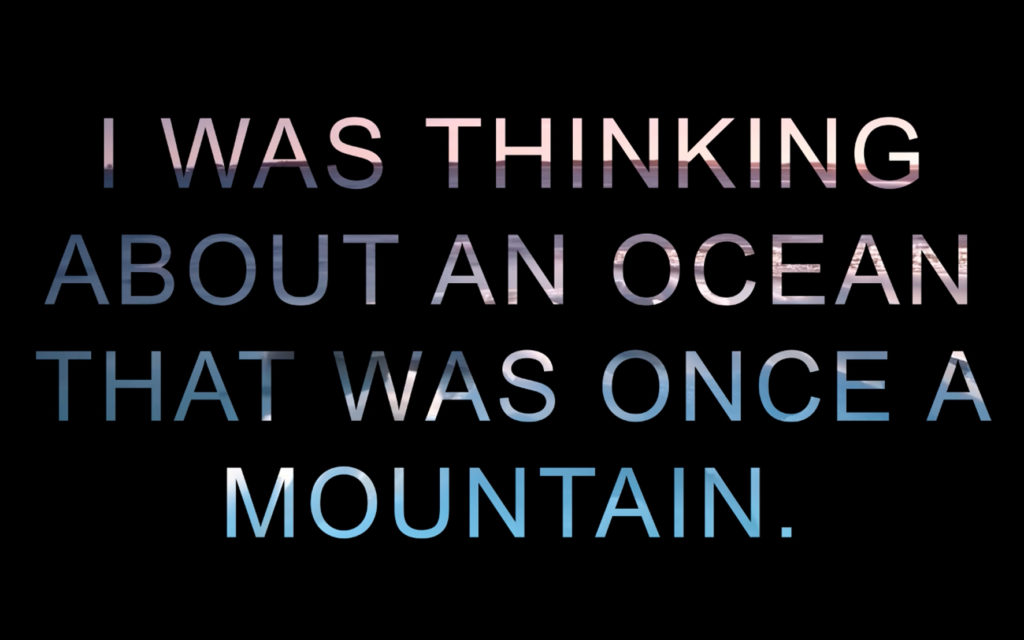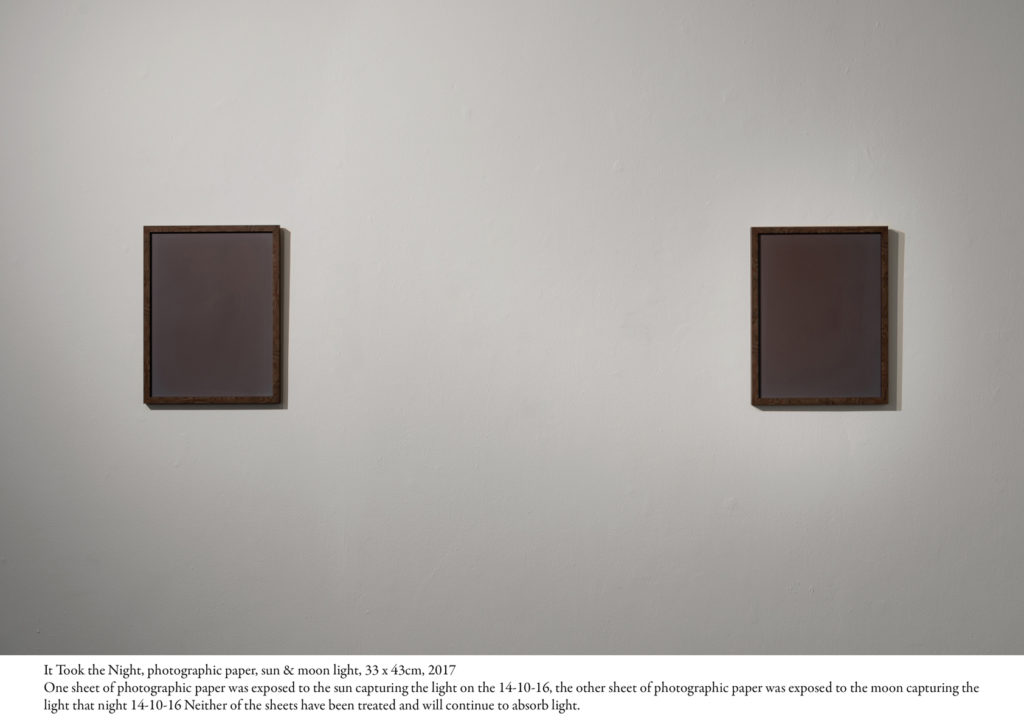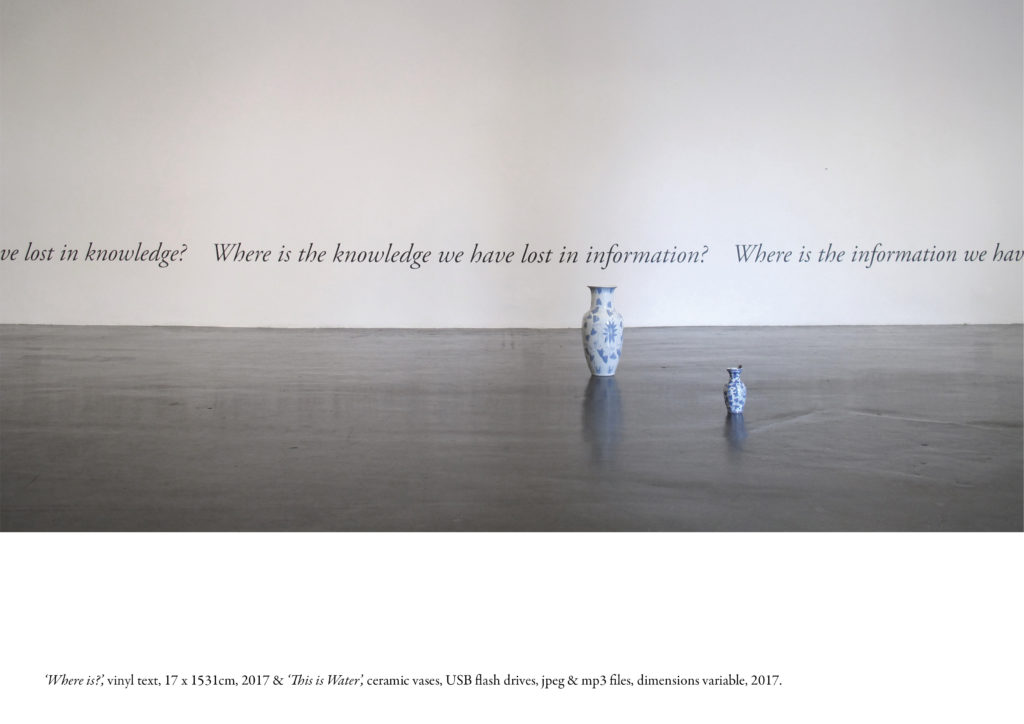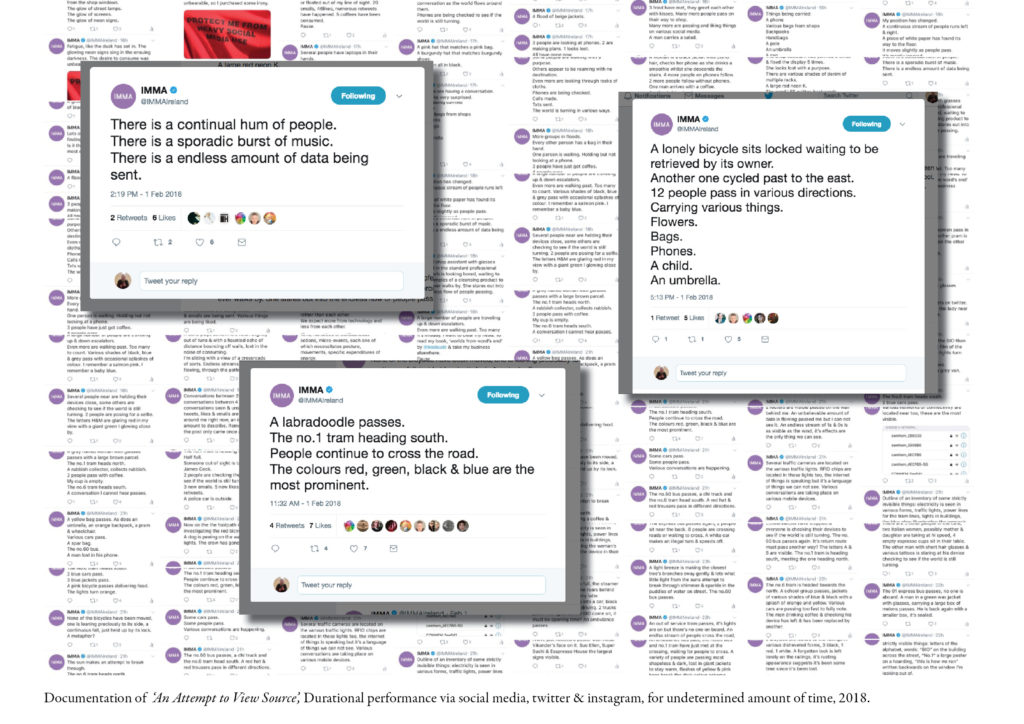25 Mar 2019
Interview
JONATHAN MAYHEW’S RESEARCH INTO DATA, REALITY, FICTION AND NARRATIVES: HOW DID WE GET HERE AND WHERE ARE WE GOING
Jonathan Mayhew is working at HIAP’s studios in Suomenlinna until the end of May 2019. His practice explores ways of intertwining poetic and post-conceptual ideas to create works that question the world around us. Through his interest in poetry, literature, technology and theory, Jonathan manipulates physical and invisible materials to contemplate pockets of daily life. He is interested in how we think about data, how we use it and how it uses us; and how fiction is blurring into reality. His residency is realized in context of a residency exchange between HIAP and Temple Bar Gallery and Studios, Dublin with the support of The Arts Council of Ireland and Finnish Institute in London.

Different Thoughts Various Evenings, 2017, film still.
AA: What are the main concepts and ideas behind your work?
JM: Joan Didion starts the White Album essay with ‘we tell ourselves stories in order to live…’ everything we do builds pictures of us, from our clicks & likes to the things we share and consume. Some pictures we can see and other we cannot. I’m very interested in how narrative in our Web 2.0 world has become incredibly important to our everyday lives.
We live in an age where we have access to everything at our fingertips 24/7 and yet with all this knowledge, truth & fiction are starting to blur together. Information has become increasingly important and everything now is generating or collecting it. Georges Perec once asked, ‘what’s happening, when nothing is happening?’ but nothing is never not happening now.
In my work I question the world and how it works, exploring it through a lens of literature and poetry. I’m interested in all this data and information; what’s it can tell us, how it can be used and how it’s used against us. Adrianne Rich wrote in the poem North American Time, ‘everything we write will be used against us in the end or those we love’. Shoshana Zuboff recently coined the term surveillance capitalism, where we, our data, the thing we give up for convenient handy apps; is now the most valuable tradable commodity in the world. Always online building the perfect version/s of ourselves to function within a system that is built to burn us out and make us endlessly crave the things that will end up destroying us, and yet, we do it all with a smile on our face and a filter to make it look pretty. I’m interested in how we got here and where we are going.
My research into narratives has brought me through quantum physics, fiction, tarot, astrology and poetry. Each a different way of looking fora story or a path to lead or guide us, a way to describe or make sense of the mess of the world we live in. We used to use the stars to guide us, but now they try and sell us things, ways of “improving” our lives. Both science & poetry are great tools to open our eyes to the complexities and beauties of our world, and sadly also its horrors. It’s hard to escape capitalism, when there’s no alternative as Mark Fisher has taught us, and it’s kind of awkward to claim to be anti-capitalist when I’m stuck operating within that system. There has to be some way around, to look for new ways to live, where it’s not a slow race to the top whilst pushing the rest to the bottom. I’m trying to find ways of using it against itself, subverting it.

AA: Some of your works are combinations of text, performance, and sculpture. How and where do different disciplines overlap in your work and what are the relationships between them? How does your creative process differ in each discipline, and where are the similarities?
JM: Everything seems to start in the same way, with writing or a sentence or an idea scribbled on a piece of paper or tapped into my phone. Whilst the outcomes may look disconnected they all stem from the same place. Trying to find the best way to say what I want, I jump between mediums a lot. A painting can’t always say what a performance can and vice versa. I also work in an odd way, where about 90% of my practice is reading, learning and collecting things and ideas, with the last 10%, the making, happening very fast. It’s like trying to set up a moment where a work will appear. Some more recent works exist as instructions, this way they can be made anywhere by anybody without having to ship things or add more objects to the world, just using what’s around, questioning it in a different way. We already have a lot of excess clogging up the earth, so Itry not to make new things, if possible (sometimes it’s impossible). I like to use objects that exist already, Things from 2nd hand shops, stock footage, found images or create things digitally. Images and objects already have a rich history and language built into them, which is more information for me to use, add or take away. I like to try and work in new ways to or do something new each time I do an exhibition; it’s only when you’re out of your depth, that things become interesting and exciting.
AA: Do you believe there is a distinction between poetry and visual art?
JM: Yes and no. Some poetry is art and some art is poetry and some art is just art and some poetry is just poetry. Context, concept and intent determine how it’s read, or well that’s what I think. It’s nice to move working methodologies between poetry and art though, as it gives you new ways of thinking and looking. I’ve been thinking recently, what would a sonnet exist as an artwork? Or a rhyming couplet? The poet Ann Carson blurs the lines really nicely when she readsand sometimes she does not.
AA: How crucial is the performative element of your work, and what is the role of objects in your art?
JM: Apart from when I read a text, most of the performances are done by objects slowly over a long time, which most people won’t see or hear. A speaker that only plays when the gallery is closed, photographs that keep taking in information (as they haven’t been treated), flowers dying, tears evaporating and works that only happen at specific times or only exist in the minds of the viewer. You can never fully grasp or see something wholly, as its always in flux, we only get to see a moment of the work, but it’s only in moments do we really exist. FOMO (fear of missing out) is something that we can’t escape; we’re on 24/7 with the world at our fingertips. Endless choices to consume, information, products, people or cat videos. There’s always something better or the possibility of something better, think of all that wasted time, when we’re looking for what’s next and not just stopping and looking, taking in a moment. Whenever I show sculptural objects there’s always something else going on. I had a work in Dublin called ‘all flowers in time’ where the flowers where left on show in a window to the public in a little disused security hut until they wilted then the piece was over. The hut had been left unused for years, as an automatic barrier had replaced the person who use to have to sit inside the hut and open the gate. It was a speeded-up display of entropy, something we all live. But because it’s so slow we don’t notice the decline. I hope to make people aware of time, claim some space back or maybe just giving them a moment to stop and think about what’s happening around them.

AA: What connects or links your work together? What are your ongoing themes?
JM: Readings is kind of an overarching title I’ve given to the work I’ve been making. It’s loose enough to allow me to make work reacting to what’s happening now. Technology and its effects on us and our effects on it, are interesting to watch. The idea of reading is very interesting too, we exist so much with just words, so much happens online in a reduced written form, that it’s hard to fully grasp the meaning as we’ve lost the human part of communication. We seem to think it’s fine to have complex conversations in 280 characters or less, made even worse when tone and the ability to read facial expressions is missing. A tweet gone wrong can have a massive effect on your life, and we’re back to narrative again and how we use it and how it uses us. Time is another area I’m interested in, which is tied to quantum physics and the possible probable futures that it holds; which at the moment are closer to fictions, than reality. Processes and thoughts related to minimalist music are hidden in my work; they influence my methodology and help me think in fresh ways. I’ve used Jonny 5 the robot from the Short Circuit films as a way of describing myself, where I’m craving new input and trying to learn more about the world. Or another way to describe how I work would be, I take a bunch of things and throw them in the dryer on spin and see what emerges.
AA: Can you tell us a bit about your current work and your plans for the rest of the year?
JM: Firstly, I’m going to be enjoying the wonderful studio and time here at HIAP on Suomenlinna, which has been made even better with support from the Arts Council of Ireland and Temple Bar Gallery & Studios. Workwise next up is a new piece being shown at Visual Carlow for the Horton Artworks Prize 2019 in June called ‘Cream’. A lotto ticket is to be bought once a week and hung on the gallery wall; during its time on the wall it is a symbol of hope for the community. If the jackpot is won or a Match 5 + Bonus the winnings will be split between the myself and the local community 50-50, with the money going towards local amenities, a project or a charitable cause in Carlow. I’m also working on an exhibition for Pallas Projects in Dublin in October, later this year. I’ll be showing new works and pieces some of which will be made here at HIAP. I’m planning a few sculptural pieces and some new text works, which may be wall works or might end up in a video, mainly I’ll be working on a new video work:
My Mother: D/a/e/i/monology
Demons, daimons & daemons, digital and spiritual operating systems that run unobtrusively in the background, rather than under the direct control of a user; like bees pollinating flowers, a by-product of collecting nectar. They do what they do to keep doing. Silently running in the background, while we don’t notice, while we’re busy doing other stuff. They perform actions while users perform actions, monitoring logging, notifications, primal urges, repressed memories, unconscious habits,they’re always there, always active. New networks, sprouting new information, endless spreading through neural networks. Algorithms silently judging and selecting for us, our clicks and likes add up to what we’re shown, our web view of the world. You can try to be right, you can try to be good, you can try to make a difference, but it’s all worthless, cause intensions are irrelevant, they don’t drive us, Daemons do, and me. I’ve got more than most.
What’s your monster?
‘My Mother: D/a/e/i/monology’ is currently being developed as a video work, dialogue and images that explores the unseen or unnoticed operating systems that occur in natural, occult and digital worlds, each has its own Demon running in the background. I’m interested in exploring how we think about data and how we use it, and in turn, how it can be used against us. So much information is flowing in, out and around us. The starting points of the work emerged from the crossover of the word Demon from the spiritual to the digital and Kathy Acker’s book My Mother: Demonology. Both the occult and tech worlds see demons in similar ways; a bug forcing us to adapt, evolving something new because of it, work around or work through it, no matter what, it changes, it become something new, the next version the inevitable upgrade. Yearning to better understand herself, Acker embarks on a journey of self-discovery, an odyssey that takesher into the territory of her past, into memories and fantasies of childhood, into wildness and witchcraft, into a world where the power of dreams can transcend the legacies of the past and confront the dilemmas of the present. This video work will be accompanied by a soundtrack created by brain waves and biofeedback translated by synthesizers, influencedby Alvin Lucier’s compositions.
Alongside this I’m working on some writing projects I’ve been thinking about but haven’t had time to do. One is an homage to the writer and artist Joe Brainard, he wrote a book, a kind of memoir called ‘I Remember’ about all the things he remembered from his life. Facebook’s algorithm shows me my past memories daily. I describe what’s in a post, images or links I’ve shared or whatever happens to be shown to me, it’s a procedural writing process that documents my life in a broken way but also helps so I remember things. I tend to call my phone my brain as it knows way more than I do. As Michel Serres’ said in Thumbelina, ‘your head is now in your hands’, which he & I also hope that it allows the head to have more time for thoughts.

Read more:
